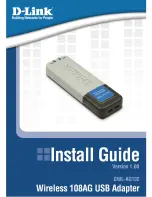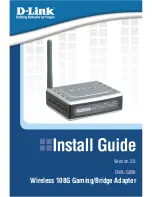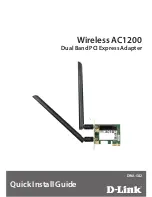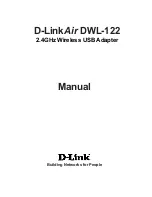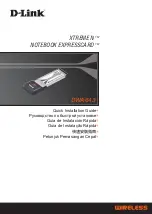
Page 2 of 5
Technical specifications
Compatibility
The ROCO-Adapter DSM-PIC-R is a pure accessory module and
can only be used together with the Turning Platform Module DSM-
PIC.
Size (mm)
48.5 x 25.4 x 27
Power Supply
The module is powered by the Turning Platform Module DSM-PIC.
Wiring
The ROCO-Adapter DSM-PIC-R is to be connected as plug-in card
with the ROCO turning platform on the one side and via a 8-pinned
cable on the other side with the Turning Platform Module DSM-
PIC.
Assembly notes
The module is assembled following the instructions on the next
page. For soldering the components on the PCB a soldering iron of
12 to 25 Watts or a soldering station with the temperate set to
approx. 410°C is needed together with 0.5 or 1.0 mm soldering
wire with rosin flux. No special tools are required. Do not use
soldering flux! Pay attention to solder speedy to avoid device
damage by overheating.
Non-Use
When the module is not used it should be stored at a dry and clean
place.
The Instruction
The full content of the instruction is important. Very important
information is marked in
col
ou
rs
; critical information is highlighted
in
red
.
Kit contents
Please first verify that the kit contains all the components listed
below.
General parts:
1x circuit board
2x diode ZMM2V7
1x pin header 4-pinned
1x relay TR5V-M
1x relay B1203
1x optocoupler SFH628A
1x pin-header (8-pinned) with cable
1x terminal clamps 2-pinned
1x spacer ring
1x screw
Resistors (Marking):
1x 33Ohm (orange, orange, black, golden, brown)
1x 100Ohm (brown, black, black, black, brown)
1x 1 kOhm (brown, black, black, brown, brown)
2x 1,8kOhm (brown, grey, black, brown, brown)
PIC for the DSM-PIC:
1x PIC „DSM-PIC ROCO“
Maintenance and care
Dust clumping together can, in combination with condensating
liquids, become conductive and deteriorate the functionality of the
module. It is therefore important to remove dust regularly by blow-
ing it off or vacuuming the module.
CAUTION: A liquid cleaning of the part is prohibited!
Please also visit our FAQ page at www.firma-staerz.de for any
question first.
Assembly instruction
Assemble the kit in the order of these instructions. All components
are placed on the top side of the PCB as close to the PCB as
possible and soldered on the bottom side of the PCB. Use a bend-
ing tool (e.g. Conrad 425869 – 62) for bending. Cut the leads of
components flush using a wire cutter after soldering.
Solder cleanly and precisely!
1. Resistors
Bend the resistor leads for 7.5 mm pitch before insertion. To facili-
tate placing components on the PCB support the edges of the
board with the help of two books, for instance, to leave enough
space for the leads under the board. Insert the resistors on board
aligning the coloured rings of all the resistors in the same way to
make it easier to verify the value of the resistors later. Place a
suitable plane piece of wood or similar on top of the resistors on
board. Turn the board together with the wood upside down. The
underside of the board is now conveniently accessible for solder-
ing the components.
Solder one end of each resistor first and check that they are posi-
tioned properly before soldering the other end of each resistor.
R1:
33Ohm
(orange, orange, black, golden, brown)
R2:
1kOhm
(brown, black, black, brown, brown)
R3, R4:
1,8kOhm
(brown, grey, black, brown, brown)
R5:
100Ohm
(brown, black, black, black, brown)
2. Diodes
Proceed as with resistors. Observe the polarity of components: the
stripe on one end of a diode must be aligned with the stripe printed
on the circuit board silkscreen layout.
D1, D2:
ZMM2V7
(„2V7“)
3. Optocouplers
Observe the polarity: The orientation notch of the component must
be aligned with the one printed on the circuit board. In case of
optocouplers being marked otherwise, the designation must show
to the track terminal blocks.
OK1:
SFH628A-3
4. Relays
K1:
Relay 6-pinned
(TR5V-M)
K2:
Relay 10-pinned
(B1203)
5. Pin headers and terminals
Watch the orientation of the terminals.
JP1:
Pin header 4-pinned
X2:
Pin header 8-pinned (with cable)
X3:
Terminals 2-inned
Component layout diagram on the PCB
Populated PCB
6. Verification
After soldering all components on the PCB verify once more that
they are placed according component layout diagram and that they
are oriented properly. Check that all solder points on the bottom
side of the PCB look correct. Note especially if there are any un-
desired solder bridges between solder pads.
Bringing into service
Before taking into service for the first time, the original PIC of the
Turning Platform Module DSM-PIC must be exchanged by the
delivered PIC „DSM-PIC ROCO“.
Then the
Connecting to the Turning Platform Module DSM-PIC
as well as the
Connecting to the turning platform of ROCO
have to be carried out.
As the next step, the operation parameters (
Settings) of the
Turning Platform Module DSM-PIC for steering the turning platform
of ROCO-have to be set.
After that, the Turning Platform Module DSM-PIC together with the
ROCO-Adapter are operational.






